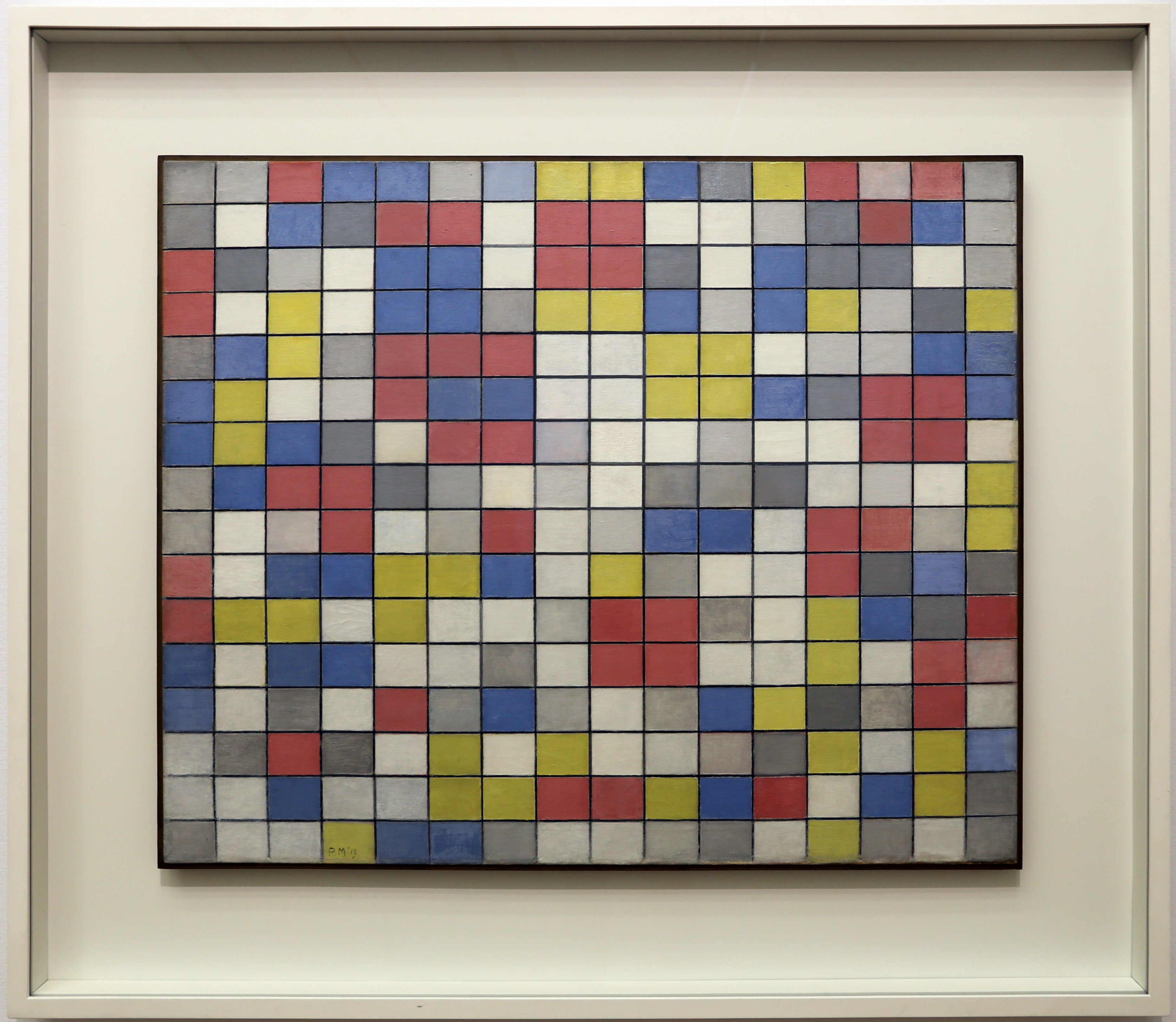You are here
Diary of the Grid: From Ice Age Europe to Mondrian
Pre-historic cave painters could have easily left a record of painting the grid: Saturating ten fingertips with some dry pigment and with two hands draw a set of ten vertical lines, equally spaced, and following that up with ten horizontal lines would have accomplished this task. Some time between then, if that ever happened, and maybe 5,000 - 10,000 years ago, the grid was discovered.
Early humans have used finger-fluting and the crosshash, and other geometric forms, however.
The Geometric Signs of Ice Age Europe. Source: von Petzinger, TED
Secondly, wild animals are not making grids — yet bees make honey comb (hexagons), and honey.
But a square grid is more fundamental than a honeycomb, having only four sides.
By extension, an equilateral triangle is perhaps more fundamental, depending on what criteria is used to define "fundamental." For example, a square has a pair of parallel line segments, and triangle has no such pairs.
Painting a Generated Grid
The grid has become a tool for humankind to view and interact with the most fundamental constituents of matter, including color and what we see.
The grid was discovered, not created.
A grid partitions colorful photographic or projected images into finite and discrete fundamental units of color. These colors will define a finite set because photon energies are quantized and there are a finite number of photons in every image. This is what we see.
I use tools to reduce the numbers of these photon energies into facimilies and averages and paint these colors into unit squares. The final product reflects that light into the viewer.
The number of squares is arbitrary.
This averaging of light is also what a computer display does. Similarly, various dyes used in color photography reduces light into averages but with randomly distributed microscopic particles.
A century of painters have focused on the square for it's own sake, painting rectanngles, and variations of squares and rectangles, bringing the grid to modern painters' attention — one's serious attention.
"Composition with Grid 9" (1919), Piet Mondrian. The painting is much paler IRL. Source: Wikipedia
The Caveat
Optics are but a fraction of life, sight is a finite perception of the human perception.
What we see with our eyes is very limited.
What is seen is a countable set of constituent parts — a finite number of photons. Nothing additional is detected there. There is nothing there beyond just the colors and the light. I detected no God, no ghosts or spirits, and no feelings. Nevertheless, it must be recorded, studied, and painted.


